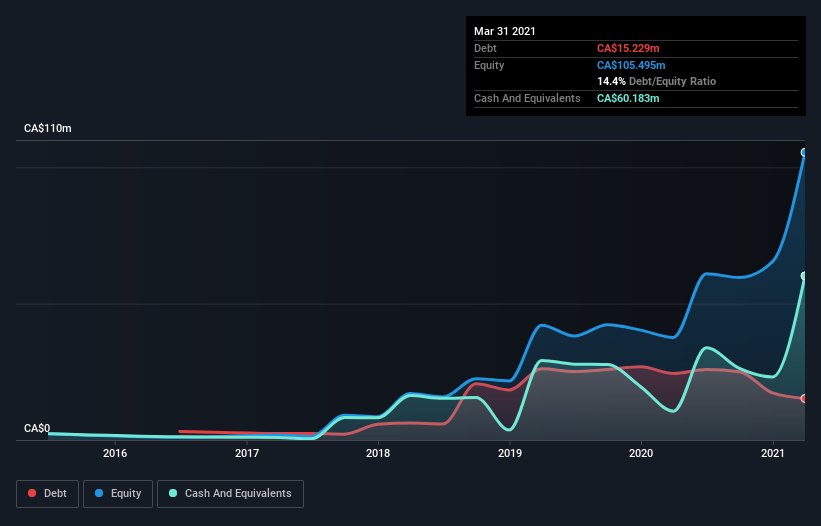Is NanoXplore (CVE:GRA) A Risky Investment?
Howard Marks put it nicely when he said that, rather than worrying about share price volatility, 'The possibility of permanent loss is the risk I worry about... and every practical investor I know worries about.' So it might be obvious that you need to consider debt, when you think about how risky any given stock is, because too much debt can sink a company. Importantly, NanoXplore Inc. (CVE:GRA) does carry debt. But should shareholders be worried about its use of debt?
Why Does Debt Bring Risk?
Debt is a tool to help businesses grow, but if a business is incapable of paying off its lenders, then it exists at their mercy. Part and parcel of capitalism is the process of 'creative destruction' where failed businesses are mercilessly liquidated by their bankers. However, a more usual (but still expensive) situation is where a company must dilute shareholders at a cheap share price simply to get debt under control. Having said that, the most common situation is where a company manages its debt reasonably well - and to its own advantage. When we think about a company's use of debt, we first look at cash and debt together.
View our latest analysis for NanoXplore
How Much Debt Does NanoXplore Carry?
You can click the graphic below for the historical numbers, but it shows that NanoXplore had CA$15.2m of debt in March 2021, down from CA$24.4m, one year before. However, its balance sheet shows it holds CA$60.2m in cash, so it actually has CA$45.0m net cash.
How Healthy Is NanoXplore's Balance Sheet?
According to the last reported balance sheet, NanoXplore had liabilities of CA$21.5m due within 12 months, and liabilities of CA$20.0m due beyond 12 months. Offsetting these obligations, it had cash of CA$60.2m as well as receivables valued at CA$11.3m due within 12 months. So it actually has CA$29.9m more liquid assets than total liabilities.
This surplus suggests that NanoXplore has a conservative balance sheet, and could probably eliminate its debt without much difficulty. Succinctly put, NanoXplore boasts net cash, so it's fair to say it does not have a heavy debt load! When analysing debt levels, the balance sheet is the obvious place to start. But it is future earnings, more than anything, that will determine NanoXplore's ability to maintain a healthy balance sheet going forward. So if you want to see what the professionals think, you might find this free report on analyst profit forecasts to be interesting.
Over 12 months, NanoXplore made a loss at the EBIT level, and saw its revenue drop to CA$60m, which is a fall of 20%. We would much prefer see growth.
So How Risky Is NanoXplore?
By their very nature companies that are losing money are more risky than those with a long history of profitability. And we do note that NanoXplore had an earnings before interest and tax (EBIT) loss, over the last year. And over the same period it saw negative free cash outflow of CA$13m and booked a CA$9.2m accounting loss. With only CA$45.0m on the balance sheet, it would appear that its going to need to raise capital again soon. Overall, its balance sheet doesn't seem overly risky, at the moment, but we're always cautious until we see the positive free cash flow. There's no doubt that we learn most about debt from the balance sheet. However, not all investment risk resides within the balance sheet - far from it. Case in point: We've spotted 2 warning signs for NanoXplore you should be aware of, and 1 of them shouldn't be ignored.
Of course, if you're the type of investor who prefers buying stocks without the burden of debt, then don't hesitate to discover our exclusive list of net cash growth stocks, today.
This article by Simply Wall St is general in nature. It does not constitute a recommendation to buy or sell any stock, and does not take account of your objectives, or your financial situation. We aim to bring you long-term focused analysis driven by fundamental data. Note that our analysis may not factor in the latest price-sensitive company announcements or qualitative material. Simply Wall St has no position in any stocks mentioned.
Have feedback on this article? Concerned about the content? Get in touch with us directly. Alternatively, email editorial-team (at) simplywallst.com.

 Yahoo Finance
Yahoo Finance 
